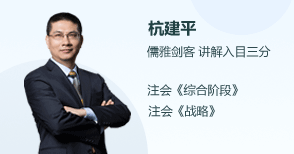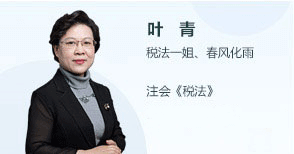Passage One
In ancient Greek, the term euthanatos meant“easy death”. Today euthanasia (安乐死) generally refers to mercy killing, the voluntary (自愿) ending of the life of someone who is terminally ill. Like abortion, euthanasia has become a legal, medical, and moral issue over which opinion is divided.
Euthanasia can be either active or passive. Active euthanasia means that a physician or other medical personnel takes an action that will result in death, such as giving an overdose of deadly medicine. Passive euthanasia means letting a patient die for lack of treatment, or stopping the treatment that has begun. Examples of passive euthanasia include taking patients off a breathing machine or removing other life-support systems. Stopping the food supply is also considered passive.
A good deal of the debate about mercy killing originates from the decision-making process. Who decides whether a patient is to die? This issue has not been solved legally in the United States. The matter is left to state law, which usually allows the physician in charge to suggest the option of death to a patient’s relatives, especially if the patient is brain dead. In an attempt to make decisions about when their own lives should end, several terminally ill patients in the early 1990s used a controversial suicide device, developed by Dr. Jack Kevorkian, to end their lives.
In parts of Europe, the decision-making process has become very flexible. Even in cases where the patients are not brain dead, patients have been put to death without their approval at the request of relatives or at the suggestion of physicians. Many cases of passive euthanasia involve old people or newborn infants. The principle justifying this practice is that such individuals have a “life not worthy of life”.
In countries where passive euthanasia is not legal, the court systems have proved very tolerant in dealing with medical personnel who practice it. In Japan, for example, if physicians follow certain guidelines they may actively carry out mercy killings on hopelessly ill people. Courts have also been somewhat tolerant of friends or relatives who have assisted terminally ill patients to die.
1. A terminally ill patient is one who .
A. gets worse every day .
B. can never get well again
C. is very seriously ill in the end D. is too ill to want to live on
2. The difference between active and passive euthanasia is whether .
A. there is an action that speeds up the death of the patient
B. the breathing machine is taken off the patient
C. an overdose of deadly medicine is used
D. the patient is denied food supply
3. According to the passage, who has/have the legal responsibility to decide on euthanasia?
A. The national or state government.
B. The patient’s relatives.
C. Physicians in charge of the patient.
D. The answer varies from country to country.
4. The principle justifying passive euthanasia in Europe is that terminally ill patients are .
A. living a life without consciousness
B. living a life that can hardly be called life
C. too old or too weak to live on
D. too old or too young to approve of euthanasia
5. The attitude of the writer toward euthanasia is .
A. negative
B. positive
C. objective
D. casual
Next week, as millions of families gather for their Thanksgiving (感恩节) feasts, many other Americans will go without. According to the United States Department of Agriculture, more than 12 million households lack enough food for everyone in their family at some time during the year—including holidays.
Hunger is surprisingly widespread in our country—one of the world’s wealthiest—yet the government estimates that we waste almost 100 billion pounds of food each year, more than one-quarter of our total supply.
Reducing this improper distribution of resources is a goal of America’s Second Harvest, the nation’s largest domestic hunger-relief organization. Last year, it distributed nearly 2 billion pounds of food to more than 23 million people in need.
America’s Second Harvest is a network of 214 inter-connected food banks and other organizations that gather food from growers, processors, grocery stores and restaurants. In turn, the network distributes food to some 50,000 soup kitchens, homeless shelters and old people’s centers in every county of every state.
A great deal of work is involved in distributing tons of food from thousands of donors (捐赠者) to hundreds of small, nonprofit organizations. Until a few years ago, America’s Second Harvest lacked any effective way to manage their inventory. Without accurate and timely information, soup kitchens were sometimes empty while food was left to spoil in loading places.
In 2000, America’s Second Harvest began to use a new inventory and financial-management system—Ceres. It is software designed specifically for hunger-relief operations. It is used by more than 100 America’s Second Harvest organizations to track food from donation to distribution.
Ceres has helped reduce the spoiling of food and improve distribution. An evaluation found that the software streamlined food banks’ operations by 23 percent in the first year alone.
With more accurate and timely reports, Ceres saves time, flees staff members to focus on finding new donors, and promises more efficient use of donations.
Hunger in America remains a troubling social problem. Technology alone cannot solve it. But in the hands of organizations such as America’s Second Harvest, it is a powerful tool that is helping to make a difference—and helping more Americans to join in the feast.
6. According to the passage, the total supply of food in America every year reaches .
A. 12 million pounds
B. more than 12 million pounds
C. almost 100 billion pounds
D. about 400 billion pounds
7. By“this improper distribution of resources”in Paragraph 3, the writer means that many .Americans lack enough food while.
A. their country is one of the richest in the world
B. much food is left to spoil
C. others waste too much food
D. others consume too much food
8. A problem for America’s Second Harvest a few years ago was that .
A. it did not get enough food from donors
B. it did not have a large enough network
C. it did not have enough soup kitchens
D. it did not have a good way to manage its food stock
9. With Ceres, America’s Second Harvest is now able to .
A. enlarge its network
B. prevent food from spoiling
C. give out food more efficiently
D. solve the hunger problem in the country
10. The main idea of the passage is that .
A. technology can help in the fight against hunger
B. America’s Second Harvest has found more donors
C. America’s Second Harvest promotes the development of technology
D. hunger is a problem even in the wealthiest country in the world
Passage Three
The differences in living standards around the world are vast. In 1993, the average American had an income of about $25,000. In the same year, the average Mexican earned $7,000, and the average Nigerian earned $1,500. Not surprisingly, this large variation in average income is reflected in various measures of the quality of life. Changes in living standards over time are also large. In the United States, incomes have historically grown about 2 percent per year (after adjusting for changes in the cost of living). At this rate, average income doubles every 35 years. In some countries, economic growth has been even more rapid. In Japan, for instance, average income has doubled in the past 20 years, and in South Korea it has doubled in the past 10 years.
What explains these large differences in living standards among countries and over time? The answer is surprisingly simple. Almost all variation in living standards is attributable to differences in countries’ productivity—that is, the amount of goods and services produced from each hour of a worker’s time. In nations where workers can produce a large quantity of goods and services per unit of time, most people enjoy a high standard of living; in nations where workers are less productive, most people must endure a more meager existence. Similarly, the growth rate of a nation’s productivity determines the growth rate of its average income.
The fundamental relationship between productivity and living standards is simple, but its implications are far-reaching. If productivity is the primary determinant of living standards, other explanations must be of secondary importance. For example, people might think that labor unions or minimum-wage laws contributed to the rise in living standards of American workers over the past century. Yet the real hero of American workers is their rising productivity.
The relationship between productivity and living standards also has great implications for public policy. When thinking about how any policy will affect living standards, the key question is how it will affect our ability to produce goods and services. To improve living standards, policymakers need to raise productivity by ensuring that workers are well educated, have the tools needed to produce goods and services, and have access to the best available technology.
11. Which of the following countries has enjoyed the fastest economic growth in history?
A. Mexico.
B. The United States.
C. Japan.
D. South Korea.
12. The word “meager” in the second paragraph is closest in meaning to“ ”
A. modest
B. poor
C. meaningless
D. plentiful
13. What is the most important factor that leads to the rise in living standards of average people?
A. Labor unions.
B. Minimum-wage laws.
C. Rising productivity.
D. Favorable public policy.
14. The study of the relationship between productivity and living standards is significant in that .
A. it calls policymakers’ attention to a qualified work force
B. it encourages workers to get better education
C. it helps improve the workers’ ability to produce goods and services
D. it enables policymakers to access the latest technology
15. The passage mainly discusses .
A. the differences in average income among countries
B. the relationship between productivity and living standards
C. the causes of the rise in living standards
D. the importance of raising productivity
习题推荐:2012年在职GCT英语预测试题及答案汇总
2012年工程硕士GCT英语辅导专栏汇总
2012年在职工程硕士填空练习及答案汇总
2012年在职工程硕士GCT英语复习要掌握科学方法
特别推荐:登录考试大会员中心,体验全新“考试应用”: 免费在线模考 资讯订阅 名师问答 ,助您快速通关!














